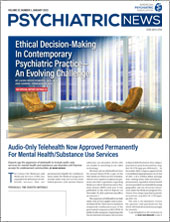Online Quiz May Help Reduce Teen Drinking
Encouraging youth to play an online game that tests their knowledge of alcohol for the chance to win prize money may be more effective at reducing adolescent drinking than distributing traditional educational materials to them, according to a study in Pediatrics.
Investigators at the University of Hong Kong and colleagues enrolled students aged 12 to 15 from 30 Hong Kong secondary schools for the study. At half of the schools, participating students received educational pamphlets with links to alcohol-related online resources. Students at the other 15 schools took an online quiz consisting of 1,000 multiple choice alcohol-related questions, with monetary prizes awarded to the students who answered the most questions correctly at each school. Students in the quiz group had 30 days to answer all the questions.
After 30 days, 9.8% of students in the quiz group reported drinking in the previous month, compared with 12.1% of students in the alcohol education group. Differences between the two groups in terms of the percentage of students who reported drinking shrank at a second follow-up two months later but remained statistically lower in the quiz group (10.4% who drank vs. 11.6% of those who received health education).
Compared with students in the alcohol education group, those in the quiz group also drank less alcohol on average on drinking days and reported fewer alcohol-related problems (for example, getting into fights or parental/school trouble for drinking) at both follow-up sessions.
“Although the effect sizes seem modest, and the individual-level benefits of this intervention might be limited, scaling up this relatively low-cost (maintenance cost HK $10,000, equivalent to U.S. $1,282) intervention widely may still achieve population-level benefits,” the investigators wrote.
CBT Reduces Depression, Increases Adherence in Patients With HIV
Many people living with HIV develop depression, which contributes to lower medication adherence and worse health outcomes. A study in the Journal of the International AIDS Society reports that cognitive-behavioral therapy (CBT) may be able to help patients with both challenges.
Researchers at the University of Miami and colleagues recruited 161 people with diagnosed depression and uncontrolled HIV (viral load > 400 copies/ml) from primary care clinics in Khayelitsha, a community outside of Cape Town, South Africa. The participants were randomly assigned to one of two groups: Participants in the usual care group received four months of regular care from their HIV care provider along with meetings with a counselor to discuss medication adherence; participants in the CBT-AD group received eight sessions of CBT that integrates depression management, cognitive strategies for medication adherence, and skills on HIV self-care. Nurses were trained to deliver the CBT-AD to the participants.
After four months, Hamilton Depression Rating Scale (HAM-D) scores in the people receiving CBT-AD dropped by nearly 16 points compared with 11 points among those receiving usual care. At 12 months, HAM-D scores were 7.51 in the CBT-AD group and 13.15 in the usual care group. The participants receiving CBT-AD also had higher adherence to their antiretroviral therapy (assessed with electronic pillboxes) than those in usual care, and after 12 months were 2.5 times as likely to have undetectable viral loads in their blood.
“Given the shortage of mental health professionals in many low- and middle-income countries, this study shows that it is possible to train nurses, a cadre of workers who are government-funded and consistently situated in specialty (HIV) primary care clinics, in delivering CBT-AD,” the researchers wrote.
Electronic Cigarette Use Linked to Erectile Dysfunction
The use of e-cigarettes and other electronic nicotine delivery devices (ENDS) may increase the risk of erectile dysfunction, suggests a report in the American Journal of Preventive Medicine.
Researchers at New York University Grossman School of Medicine and colleagues examined data collected from December 2016 to January 2018 as part of the Population Assessment of Tobacco and Health study, a national longitudinal study of tobacco use and how it affects the health of people in the United States. They focused on data from 13,711 adults aged 20 years and older who answered a question about erectile dysfunction.
Overall, 4.8% of respondents were currently using ENDS and 24.5% were former users. Compared with never users, current ENDS users were more than twice as likely to report experiencing erectile dysfunction as those who never used ENDS. When only including adults aged 65 and younger with no history of heart disease (another risk factor for erectile dysfunction), current ENDS users were 2.41 times as likely as never users to experience erectile dysfunction.
Even after adjusting for numerous other risk factors including age, race/ethnicity, other tobacco use, physical activity, diabetes, hypertension, and mental health status, current ENDS users (with or without a history of heart disease) remained about twice as likely to experience erectile dysfunction than those who never used ENDS.
“While ENDS remain under evaluation for harm reduction and smoking-cessation potential, ENDS users should be informed about the possible association between ENDS use and erectile dysfunction,” the authors concluded.
Several Factors Increase Risk of Antipsychotic Use In Emergency Room
Antipsychotics and sedatives are commonly used to treat patients with agitation in the emergency department, but research shows that these medications can be harmful to older adults. A study in the Journal of the American Geriatrics Society found that older patients presenting in an emergency room with dementia or delirium are more likely to be treated with antipsychotics whereas women and those under age 74 are more likely to be treated with sedatives.
“Understanding factors associated with antipsychotic and sedative use is an important step in developing strategies to optimize their administration to older adults in the [emergency department],” the researchers wrote.
The researchers assessed data from the 2014-2017 National Hospital Ambulatory Medical Care Survey database, which compiles nationally representative data on acute-care and short-stay hospital visits. They focused their analysis on adults aged 65 years and older who visited the emergency department, excluding those with an underlying psychiatric diagnosis, admission to mental health or detoxification unit, or transfer to a psychiatric hospital. Patients were also excluded if they reported problems with substance misuse. The final sample included 12,777 emergency department visits.
Overall, 3.5% of these visits involved a prescription of an antipsychotic and/or sedative. Patients who resided in nursing homes as well those with dementia and/or delirium were more likely to be administered antipsychotics in the emergency department than those who did not have these characteristics, the researchers found. Female patients were more likely to be administered sedatives than male patients, as were patients aged 65 to 74 and those who received CT or MRI scans during their visit.
Both antipsychotic and sedative use were associated with longer time spent in the emergency department and longer hospital stay overall.
Early Identification of Autism Increasing, But Gaps Remain
The prevalence of autism spectrum disorder (ASD) among minority children and children from low-income households has increased in recent years, suggesting progress in ASD screening practices.
The findings, which were published in the Morbidity and Mortality Weekly Report Surveillance Studies, were based on data collected by the Autism and Developmental Disabilities Monitoring (ADDM) Network. The ADDM monitors ASD trends in 11 U.S. states.
In 2018, 1 in 59 children born in 2014 had an ASD diagnosis, with a male-to-female ratio of 3.4:1—a rate higher than what was observed in 2014 among children born in 2010. About half of these children also had a co-occurring intellectual disability. ASD rates were lowest among non-Hispanic White children, followed by non-Hispanic Black children, Hispanic children, and Asian/Pacific Islander children.
The researchers noted that about 72% of children diagnosed with ASD received their first evaluation by age 3. Among children diagnosed with ASD but no co-occurring intellectual disability disorder, the early identification rates were similar regardless of household income levels. However, children with ASD and intellectual disability from low-income families were less likely to receive an early evaluation compared with children in high-income households. The prevalence of ASD was higher in children raised in low-income vs. high-income households.





